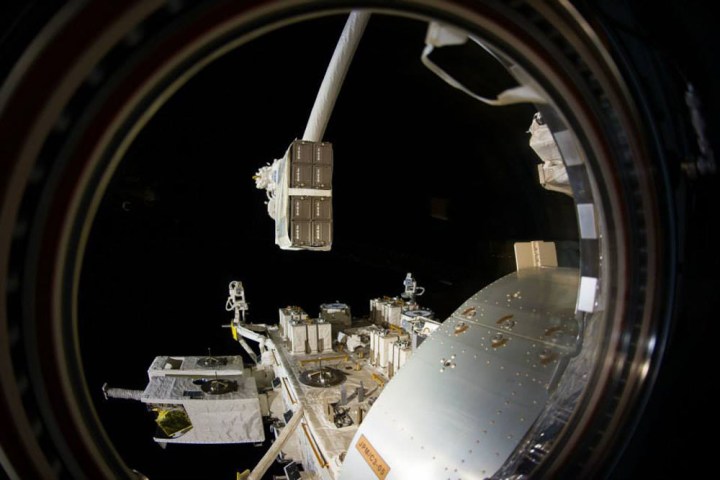
Say hello to NanoRacks, a self-described entrepreneurial company who opened its doors with the sole purpose of creating a simple and efficient way for others to get to space. Be it high schools and universities, government space agencies, or other companies altogether, the folks at NanoRacks have essentially acted as NASA’s right hand to spearhead the commercialization of space. By focusing on uniting three basic concepts — low-cost, standardization of hardware, and understanding its customers — it hopes to facilitate the creation of a commercial environment available to everyone (who pays, of course).
“We developed a commercial pathway to the station, and now we want to extend that pathway outside the station,” says NanoRacks managing director Jeff Manber to Ars Technica. “This is a sign that we believe in the future of the station.”

According to NanoLocks, the intended project would cost the company somewhere between $12 and $15 million, and would likely lift off to the ISS aboard SpaceX’s Dragon capsule by as early as 2018. However, NASA has yet to officially sign off on the airlock and is currently conducting integration tests with Boeing (its primary ISS contractor).
“We’re very intrigued by it, and we haven’t found any showstoppers so far,” manager of the space station National Lab Office, Mike Read, told Ars.
Should the agency give NanoRacks’ private airlock the green light, the available benefits for NASA would be extensive. First off, it would greatly assist in the continuation of NASA’s quest to commercialize space and allow for an influx of resources to help build out its Commercial Crew program — of which Congress just awarded $1.2 billion in funding for 2016. Additionally, a dedicated, private airlock would likely provide NASA (and others) the ability to access it far more than just five times annually, with projections hinting at it being used at least 12 times per year. The airlock could also serve as a launch site for CubeSats and larger satellites, while providing NASA a reliable method for retrieving damaged storage tanks and pumps, instead of simply scrapping them in space.
To begin, NanoRacks says it plans on manufacturing a half-cylinder container measuring roughly six and a half feet in diameter and about six feet long. Once built (and sent to the ISS), the container would attach to the ISS’s Node 3 area via a common birthing mechanism near its cupola (one of the ISS’s dome-shaped areas). After successfully attaching, the container would then be pressurized and immediately be ready for use.

“From the national lab perspective, the attractive thing is that this leverages ISS in a commercial manner, built with commercial funds and operated as a commercial capability,” Read continues. “That’s what the whole concept of the National Lab is. If this works, it’s an important step toward what an exploration partnership might look like. Not only are we using [the] space station for research, we’re using it to test new business relationships for exploration, and this would be an important one.”
As Read points out, NanoRacks’ airlock is essential to the commercialization of space. Aside from offering a separate method for commercial entities to access the ISS, it also grants NASA (and its astronauts) an incredible opportunity to perform repairs and fixes from the comfort of a sizable room. Instead of relying on space walks to fix various equipment around the station, the broken part could be detached, brought into NanoRacks’ container, and evaluated without an astronaut requiring the use of a cumbersome suit. Not to mention the sheer safety factor of working inside an actual capsule (we’ve all seen Gravity) should allow those involved to rest a bit easier.
While there’s no official timeline for when NASA intends to give a yes or no answer to NanoRacks’ private airlock, the suggested timeline of 2018 bodes well for the ISS receiving its much-needed upgrade.


